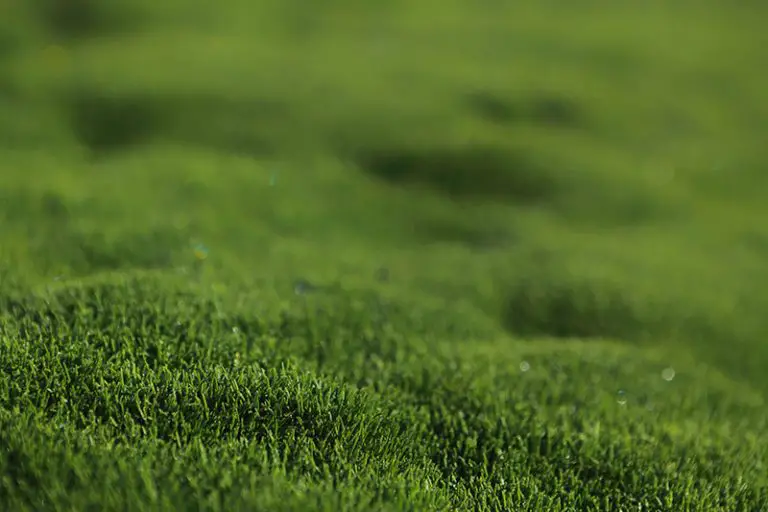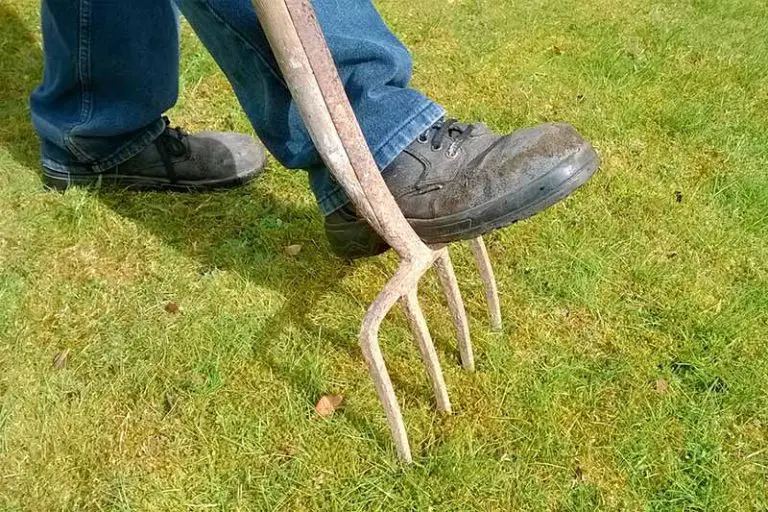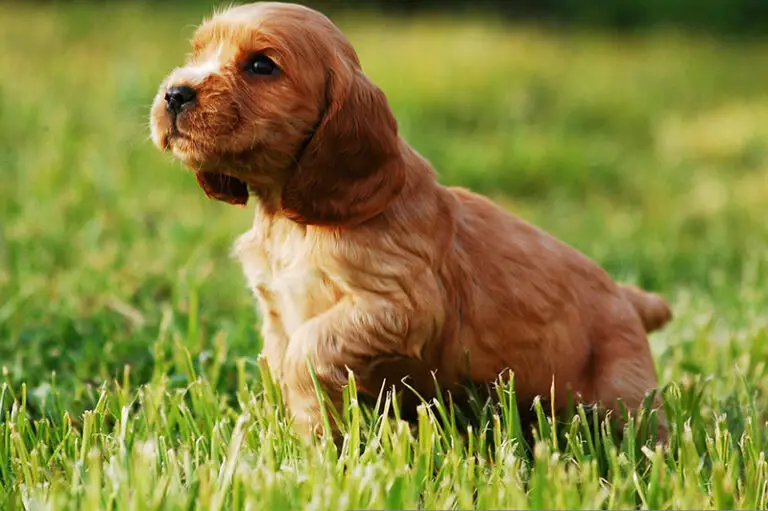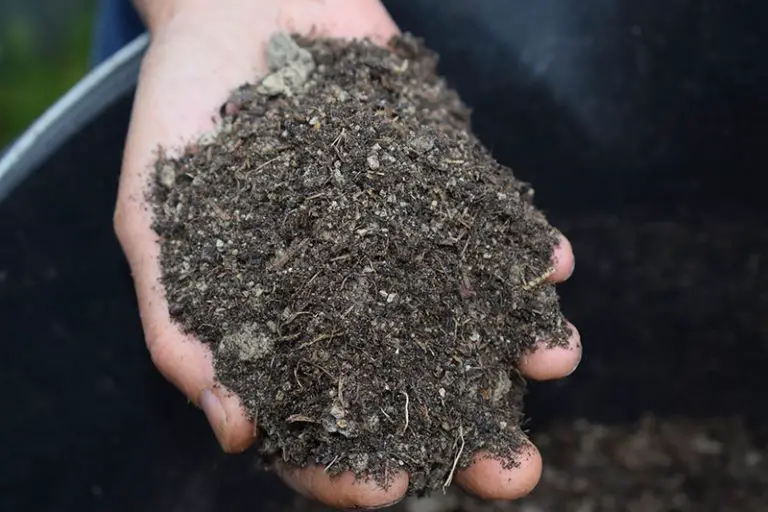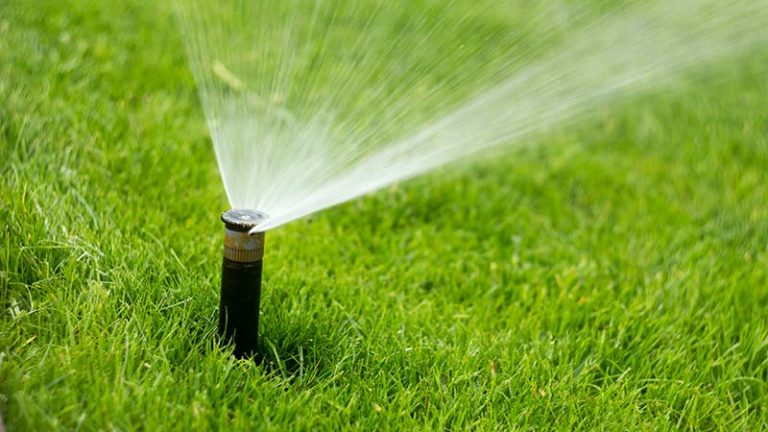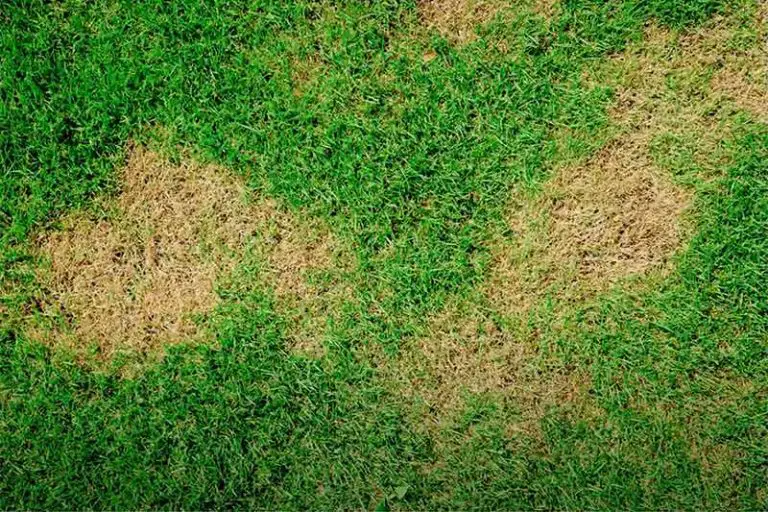Does Grass Seed Go Bad?
Maybe you’re deciding what to do with a half-full bag of grass seed leftover from a seeding job, or you’ve dug out an old bag of seed from the back of the shed, only to find that it’s past its sell-by date. You may be wondering, does grass seed go bad? Is it okay to use old seed that’s been sitting in storage for a while?
The short answer is: yes, grass seed does go bad eventually, and the speed at which this happens is influenced by a number of external factors. When stored in optimal conditions, grass seed will retain full viability for up to one year after the tested date found on the seed’s packaging, and will then subsequently lose 10 percent of its germination rate for each year it’s kept in storage. This deterioration is generally quite slow, however, the seed’s viability may decrease at a much faster rate depending on aspects such as the quality of the seed, the storage method, and the temperature and humidity of the storage area.
Read on to learn more about the different factors that affect the germination rate of stored grass seed, as well as some guidance on how to best store any leftover bags of seed to be used for future jobs.
How Long Does Grass Seed Last In Storage?
If stored in optimal conditions, grass seed can stay viable for two to three years. However, even under optimal conditions, the grass seed will lose roughly 10 percent of its germination rate each year that it is kept in storage. This means that as the seed gets older, the percentage of seeds that will germinate when planted diminishes, and you will have to apply a higher volume of seeds to get the same amount of coverage. The speed at which the seed deteriorates in storage is influenced by a number of different factors, which we have gone through in the next section.
What Makes Grass Seed Go Bad?
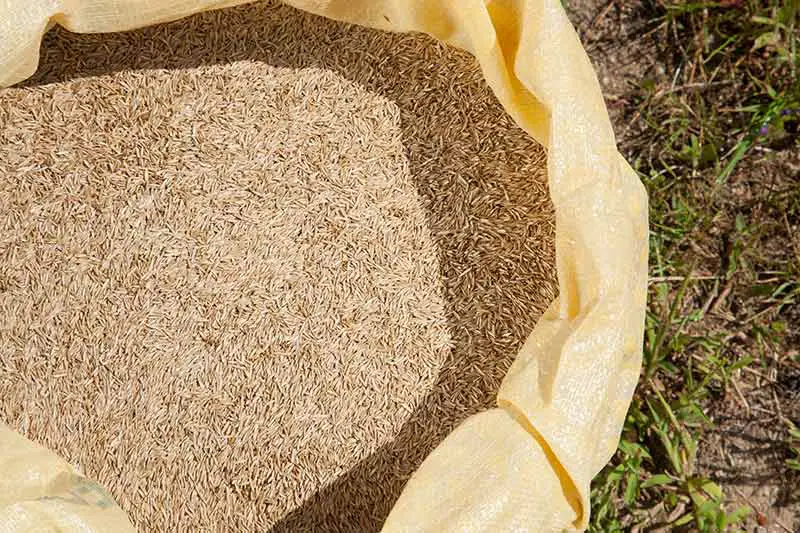
Seed Quality
The quality of the grass seed has a huge influence on how quickly its germination rate will deteriorate over time, and how long before the grass seed goes bad when kept in storage. The germination rate of grass seed, or in other words how many seeds will sprout in one season, is influenced by the location of production, the conditions under which the seed was harvested, and how the seed was packaged and stored before you purchased it. Even if the seed has been stored in the best possible conditions, the germination rate will be significantly lower if the seed has been harvested in suboptimal conditions.
Seed Moisture Content
The internal moisture content of the grass seed affects how long it will last before the seed goes bad. Ideally, grass seed should have an internal seed moisture level of 10 to 20 percent, but this percentage will vary between grass species. If grass seed falls below this level from losing moisture, or exceeds it from absorbing moisture, it’s likely that it will die and become unusable. It’s quite rare for grass seed to fall below the ideal level of internal seed moisture, however, it’s much more common for grass seed to exceed the level as it can easily absorb too much moisture when left in a humid environment.
Storage Temperature
Extremities in the temperature of the seed’s storage conditions will have an impact on grass seed viability. The ideal storage temperature for most grass seed species is between 0 and 60 degrees Fahrenheit, and it’s typically better to keep the seeds at the cooler end of this scale. Grass seed has been known to survive freezing temperatures, but it’s best to try and avoid letting seed freeze as this can have an impact on its quality. It’s even worse to store the seed in temperatures that are too high, as anything above 100 degrees Fahrenheit will severely affect the seed’s viability.
Storage Humidity
Grass seed is also affected by the level of humidity in its storage environment. In humid environments, the grass seed will absorb the excess moisture, which can lead to molding, fungal infections, and premature sprouting. Grass seed that has been stored in open containers or cloth sacks are more likely to succumb to the effects of humidity.
Ventilation
The ventilation of the environment in which the grass seed is stored can also impact its viability. If the seed is left in a shed or a similar densely-stacked area, it will be at risk of suffocation. The limited airflow from the bag of grass seed being stacked too tightly with other objects can cause the seed to accumulate moisture, which in turn reduces the seed’s germination rate.
Rodents and Pests
Grass seed will deteriorate if it is stored in a place that is accessible to rodents or pests. These creatures love to feast on seed, and will leave you with nothing but a bag of husks once they’ve had their fill. Not only is this irritating as it literally eats away at your grass seed supply, but you might not even notice it happening due to the leftover husks making it appear as though the seed is still there.
How Can You Tell When Grass Seed Is Bad?
Look at the Packaging
When trying to determine if a bag of grass seed has gone bad, you should first look at the packaging it’s in – store-bought grass seed will come with a sell-by date, a germination rate, and a tested date printed somewhere on the packaging. The germination rate indicates the average number of seeds that will sprout over a 5 or 10 day period, and is measured in a percentage; this will usually measure at 80 percent or higher. This is the rate at which you should expect the seeds to germinate if used within the first year of their packaging. The tested date is the date at which the germination rate was tested, which also gives an indication of how old the bagged seed is. The sell-by date is different from the type of sell-by dates we get on food; if the seed has passed its sell-by date, it doesn’t mean that the seed has completely expired, but rather that the germination rate will be reduced.
Look for Physical Signs
Even though the packaging provides dates and figures for the lifespan and germination rate of your grass seed, these are just estimates and only provide a rough idea of how long before your grass seed will go bad in storage. It can be difficult to tell if grass seed has gone bad just by looking at it, as it’s often the case that there aren’t any physical signs of deterioration. With that said, sometimes there are some obvious signs which indicate that the seed has deteriorated. Carefully inspect your grass seed and look for signs of fungi growth and/or discoloration, and also check to see if there are any damp clumps of seed. You should dispose of the whole bag and just buy a new batch if you notice any of these signs in your grass seed. Attempting to sow grass seed that’s in this state will only result in a low rate of germination and a patchy lawn when the few healthy seedlings grow in.
How to Test Grass Seed for Viability
Water Test
This test is less effective than carrying out a germination test, but it is a quick way of getting a rough idea of whether your grass seeds are at all viable, or if they need to be abandoned.
- Take a handful of seeds and place them into a container of water.
- Let the seeds sit for about 15 minutes.
- Check the seeds; if they have sunk to the bottom of the container, they are viable; if they are floating at the top of the water, they will most likely not sprout.
Germination Test
This test is the more accurate method to get an idea of the current germination rate of your grass seeds.
- Take about 10 grass seeds and place them in a line on a damp paper towel.
- Fold the paper towel and carefully place it into a zip-lock bag, then seal the bag to protect it and help to keep it moist.
- Put the paper towel in a warm place such as a high shelf or above a refrigerator, but not somewhere where it will be exposed to direct sunlight as this will overheat the seeds.
- Check the seeds at least once a day to monitor them for germination, and to also make sure that the paper towel is still moist; mist the towel to lightly re-dampen it if it starts to dry out.
- After 10 days, see how many of the seeds have sprouted. If it’s less than 5 seeds, the seed has a viability rate of less than 50%. If the test results show that the grass seed has a 50% viability rate, you should sow double the recommended amount of seeds when planting.
How to Store Grass Seed
If stored in proper conditions, the full viability of bagged grass seed should remain the same for one year after the tested date found on its packaging. For each year that passes beyond the first year, the germination rate of the grass seed will decline by 10 to 20 percent; the speed at which the grass seed deteriorates will be sped up by improper storage conditions, reducing the grass seed’s viability and lifespan.
Store Seed in Suitable Container
Grass seed needs to be stored in a suitable container that will protect it from being infiltrated by excess moisture, fungal spores, and rodents. The container needs to be rodent-proof, but not airtight so as to allow airflow and prevent the growth of mold.
For unopened bags of grass seed, keep the seed sealed in its original packaging and place it into a container that’s rodent-proof but isn’t completely airtight. Grass seed sealed in its original bag is limited to only being able to exchange moisture with the air within its packaging, and no new moisture is able to penetrate it from the external environment if placed into a secondary container. Grass seed stored in this condition should retain its optimum internal seed moisture content of 13 percent, thus remaining highly viable for many years.
If the bag of seed has been opened, check that the remaining seed is clean and dry, then pour it into a container that’s rodent-proof but isn’t completely airtight. Make sure to seal the container properly. If using a burlap sack or similar storage method, place an open container of baking soda or commercial desiccant in with the grass seed to reduce the amount of moisture and fungi growth. On a self-sticking label, write the current date, the brand of the grass seed, the species of the grass seed, and the seed’s testing and sell-by date found on the original packaging, and stick the label onto the container of leftover seed. If you have multiple containers of leftover seed, store them away from each other to reduce the buildup of moisture.
Choose the Right Storage Area
Once placed into an appropriate container, the grass seed needs to be placed into a cool, dry area where there’s good air circulation and is free of humidity. You should avoid keeping the seed in an unheated shed, garage, or anywhere else where the temperature might drop below 32 degrees Fahrenheit. Instead, keep it in a basement or cellar, and make sure that the seed is kept up off the floor somewhere that mice won’t easily get to it. If you have one with enough space, grass seed can also be kept in a refrigerator, as long as an open container or baking soda or a commercial desiccant is placed in with it to remove excess moisture.
Moisture in Storage Area
Grass seed should be stored in a dry area and in such a way that prevents the seed from being able to absorb any moisture. As a rule of thumb, the general humidity of the grass seed’s storage conditions should never surpass 60 percent. If humidity levels surpass this amount, the grass seed is susceptible to an excessive internal seed moisture content, as well as being vulnerable to fungal infestations, making grass seed go bad over time.
Temperature in Storage Area
The majority of grass seed types will need to be stored in an area where the temperature isn’t too hot, but also not so cold that the seed will become frozen. The storage area where you keep the seed should have a reasonably constant temperature, and this temperature should be kept below 60 degrees Fahrenheit but above 32 degrees Fahrenheit (freezing point) – cooler temperatures are better, but you should avoid letting the seed freeze. The ideal temperature range for grass seed storage is between 40 and 55 degrees Fahrenheit.
Ventilation in Storage Area
The storage area of the grass seed should be well ventilated with a constant airflow, and the individual bags of seed should be kept separate from each other and not stacked tightly with other objects. Enclosed, damp storage areas that are tightly packed will make grass seed go bad at a much faster rate.
If you’re wondering whether that leftover bag of fertilizer has gone bad too, see our article Does Fertilizer Go Bad or Expire.

